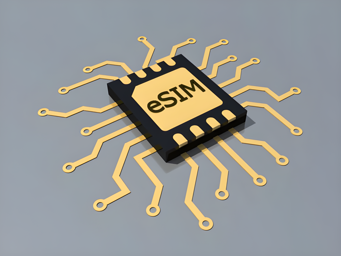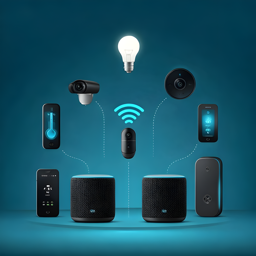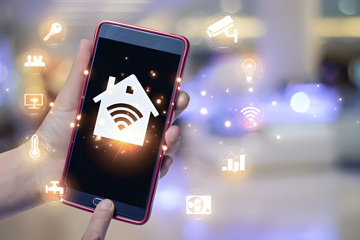Integrating eSIM with ESP32 for Scalable IoT Deployments
ESP32 Projects: SIM7000G LTE-M & GPS Integration Guide
Integrate cellular connectivity and GPS tracking into your ESP32 projects using the SIM7000G Real-Time Data Streaming over LTE: Video and Telemetry with ESP32Discover a comprehensive guide to real-time LTE streaming with ESP32 and SIM7000G for video and telemetry in robust IoT applications. module. This comprehensive guide provides step-by-step instructions for hardware setup, AT command configuration, power optimization strategies
Real-Time Data Streaming over LTE: Video and Telemetry with ESP32Discover a comprehensive guide to real-time LTE streaming with ESP32 and SIM7000G for video and telemetry in robust IoT applications. module. This comprehensive guide provides step-by-step instructions for hardware setup, AT command configuration, power optimization strategies Cost Analysis: Total Ownership for ESP32 Connectivity SolutionsUnlock cost savings with ESP32 IoT solutions. This guide reveals how to balance hardware, connectivity, power, and maintenance costs to master TCO., and troubleshooting tailored for IoT deployments.
Cost Analysis: Total Ownership for ESP32 Connectivity SolutionsUnlock cost savings with ESP32 IoT solutions. This guide reveals how to balance hardware, connectivity, power, and maintenance costs to master TCO., and troubleshooting tailored for IoT deployments.
Table of Contents🔗
- Overview
- Hardware Setup
 Zigbee Green Power: Ultra-Low-Power Energy Harvesting SolutionsDiscover how ZGP enables battery-free IoT devices through energy harvesting with ESP32 integrations, supporting smart home and industrial applications.
Zigbee Green Power: Ultra-Low-Power Energy Harvesting SolutionsDiscover how ZGP enables battery-free IoT devices through energy harvesting with ESP32 integrations, supporting smart home and industrial applications. - Configuring LTE-M
 Delta Updates: Reducing OTA Payload Size for Cellular NetworksLearn how delta updates reduce data usage, improve speed, and cut costs for ESP32 firmware patches over NB-IoT/LTE-M cellular networks. Connectivity
Delta Updates: Reducing OTA Payload Size for Cellular NetworksLearn how delta updates reduce data usage, improve speed, and cut costs for ESP32 firmware patches over NB-IoT/LTE-M cellular networks. Connectivity - GNSS Setup for Location Tracking
- Power Management
 Arquitetura ESP32: SoC dual-core, subsistemas RF integradosDiscover the ESP32’s dual-core prowess and integrated RF subsystems for efficient, innovative IoT applications—from smart homes to industrial sensors. Strategies
Arquitetura ESP32: SoC dual-core, subsistemas RF integradosDiscover the ESP32’s dual-core prowess and integrated RF subsystems for efficient, innovative IoT applications—from smart homes to industrial sensors. Strategies - Sending Data
 Connecting ESP32 to Cloud Services via Wi-FiDiscover how to connect your ESP32 to AWS, Azure, and Google Cloud using secure Wi-Fi. This guide covers setup, error handling, and low power strategies. Over LTE-M
Connecting ESP32 to Cloud Services via Wi-FiDiscover how to connect your ESP32 to AWS, Azure, and Google Cloud using secure Wi-Fi. This guide covers setup, error handling, and low power strategies. Over LTE-M - Troubleshooting Common Issues
 Zigbee Over-the-Air (OTA) Firmware Updates with ESP32 CoordinatorsSecure your IoT network with OTA firmware upgrades using an ESP32 coordinator. Our guide details firmware setup, packaging, security, and troubleshooting.
Zigbee Over-the-Air (OTA) Firmware Updates with ESP32 CoordinatorsSecure your IoT network with OTA firmware upgrades using an ESP32 coordinator. Our guide details firmware setup, packaging, security, and troubleshooting. - Example Code & AT Commands
 Using Quectel BC66/BG96 Modules with ESP32 for NB-IoT ConnectivityExplore our detailed tutorial on integrating Quectel BC66/BG96 with ESP32 for low-power, reliable NB-IoT connectivity. Learn hardware setup and AT commands.
Using Quectel BC66/BG96 Modules with ESP32 for NB-IoT ConnectivityExplore our detailed tutorial on integrating Quectel BC66/BG96 with ESP32 for low-power, reliable NB-IoT connectivity. Learn hardware setup and AT commands.
Overview🔗
The SIM7000G Real-Time Data Streaming over LTE: Video and Telemetry with ESP32Discover a comprehensive guide to real-time LTE streaming with ESP32 and SIM7000G for video and telemetry in robust IoT applications. module, manufactured by SIMCom, is a versatile LTE Cat-M1/NB-IoT and GNSS module that integrates seamlessly with the ESP32. It provides robust LTE-M connectivity, low-power operation, and precise location tracking, making it ideal for IoT applications such as asset tracking, environmental monitoring
Real-Time Data Streaming over LTE: Video and Telemetry with ESP32Discover a comprehensive guide to real-time LTE streaming with ESP32 and SIM7000G for video and telemetry in robust IoT applications. module, manufactured by SIMCom, is a versatile LTE Cat-M1/NB-IoT and GNSS module that integrates seamlessly with the ESP32. It provides robust LTE-M connectivity, low-power operation, and precise location tracking, making it ideal for IoT applications such as asset tracking, environmental monitoring Connecting ESP32 to Cloud Services via Wi-FiDiscover how to connect your ESP32 to AWS, Azure, and Google Cloud using secure Wi-Fi. This guide covers setup, error handling, and low power strategies., and smart city solutions.
Connecting ESP32 to Cloud Services via Wi-FiDiscover how to connect your ESP32 to AWS, Azure, and Google Cloud using secure Wi-Fi. This guide covers setup, error handling, and low power strategies., and smart city solutions.
Key Features:
- LTE Cat-M1
 Real-Time Data Streaming over LTE: Video and Telemetry with ESP32Discover a comprehensive guide to real-time LTE streaming with ESP32 and SIM7000G for video and telemetry in robust IoT applications./NB-IoT: Supports low-power, wide-area networks.
Real-Time Data Streaming over LTE: Video and Telemetry with ESP32Discover a comprehensive guide to real-time LTE streaming with ESP32 and SIM7000G for video and telemetry in robust IoT applications./NB-IoT: Supports low-power, wide-area networks. - GNSS: Multi-constellation support for GPS, GLONASS, BeiDou, and Galileo.
- Low Power Consumption
 Zigbee Green Power: Ultra-Low-Power Energy Harvesting SolutionsDiscover how ZGP enables battery-free IoT devices through energy harvesting with ESP32 integrations, supporting smart home and industrial applications.: Optimized for battery-powered applications.
Zigbee Green Power: Ultra-Low-Power Energy Harvesting SolutionsDiscover how ZGP enables battery-free IoT devices through energy harvesting with ESP32 integrations, supporting smart home and industrial applications.: Optimized for battery-powered applications. - Compact Design: Easy to integrate with ESP32
 Zigbee Over-the-Air (OTA) Firmware Updates with ESP32 CoordinatorsSecure your IoT network with OTA firmware upgrades using an ESP32 coordinator. Our guide details firmware setup, packaging, security, and troubleshooting. and other microcontrollers.
Zigbee Over-the-Air (OTA) Firmware Updates with ESP32 CoordinatorsSecure your IoT network with OTA firmware upgrades using an ESP32 coordinator. Our guide details firmware setup, packaging, security, and troubleshooting. and other microcontrollers.
Hardware Setup🔗
Required Components
| Component | Specification |
|---|---|
| ESP32 | ESP32-WROOM-32D (or equivalent) |
| SIM7000G Module | LTE Cat-M1/NB-IoT/GNSS compatible |
| Antennas | LTE antenna (800-2200 MHz), GNSS active antenna |
| Power Supply | 3.7V Li-Po battery + 5V boost converter (SIM7000G needs 3.4V-4.4V @ 2A peak) |
Wiring Diagram
SIM7000G <--> ESP32
VCC --> 5V (with boost converter)
GND --> GND
RX --> TX2 (GPIO17)
TX --> RX2 (GPIO16)
PWR_KEY --> GPIO4 (for power control)
Critical Note: Use a separate power supply for the SIM7000G during development. The ESP32's 5V pin cannot sustain the module's 2A peak current during network registration Using Quectel BC66/BG96 Modules with ESP32 for NB-IoT ConnectivityExplore our detailed tutorial on integrating Quectel BC66/BG96 with ESP32 for low-power, reliable NB-IoT connectivity. Learn hardware setup and AT commands..
Using Quectel BC66/BG96 Modules with ESP32 for NB-IoT ConnectivityExplore our detailed tutorial on integrating Quectel BC66/BG96 with ESP32 for low-power, reliable NB-IoT connectivity. Learn hardware setup and AT commands..
Configuring LTE-M Connectivity🔗
Basic AT Command Flow
# Initialize module
AT+CPIN? # Check SIM status
AT+CSQ # Signal quality (20-31 is good)
AT+COPS=? # Scan available networks
AT+CGDCONT=1,"IP","<APN>" # Set APN (e.g., "iot.t-mobile.com")
# Connect to network
AT+CNACT=1,1 # Activate PDP context
AT+CIPSTART="TCP","example.com",80 # Open TCP connection
AT+CIPSEND # Send data
Hello World
Real-World Example: HTTP POST Request
void sendHTTPPost() {
Serial2.println("AT+HTTPINIT");
Serial2.println("AT+HTTPPARA=\"URL\",\"http://your-api.com/data\"");
Serial2.println("AT+HTTPPARA=\"CONTENT\",\"application/json\"");
Serial2.println("AT+HTTPDATA=24,5000");
delay(100);
Serial2.println("{\"temp\":23.5,\"hum\":62}");
Serial2.println("AT+HTTPACTION=1");
Serial2.println("AT+HTTPTERM");
}
Pro Tip: Always implement retry logic with exponential backoff for network operations. LTE-M Delta Updates: Reducing OTA Payload Size for Cellular NetworksLearn how delta updates reduce data usage, improve speed, and cut costs for ESP32 firmware patches over NB-IoT/LTE-M cellular networks. networks may experience congestion in urban areas.
Delta Updates: Reducing OTA Payload Size for Cellular NetworksLearn how delta updates reduce data usage, improve speed, and cut costs for ESP32 firmware patches over NB-IoT/LTE-M cellular networks. networks may experience congestion in urban areas.
GNSS Setup for Location Tracking🔗
Enabling GNSS with Power Saving
AT+CGNSPWR=1 # Power on GNSS
AT+CGNSSEQ="RMC" # Set NMEA sentence type
AT+CGNSCOLD # Cold start
AT+CGNSINF # Get position info (returns UTC,lat,lon,alt,speed)
Parsing NMEA Data on ESP32
void parseGGA(String nmea) {
// Example: $GPGGA,082559.00,3717.22366,N,12141.55238,W,1,12,0.98,12.7,M,,M,,*64
String parts[15];
int index = 0;
for(int i=0; i<nmea.length(); i++){
if(nmea[i] == ',') index++;
else parts[index] += nmea[i];
}
float latitude = parts[2].toFloat() / 100;
if(parts[3] == "S") latitude *= -1;
// Similarly parse longitude, altitude...
}
GNSS Performance: Cold start typically takes 45s-2min. Use assistive data (EPO) for faster fixes:
AT+CGNSAID=31,1,1 # Enable EPO assistance
AT+CGNSURC=2 # Enable periodic position reports
Power Management Strategies🔗
Sleep Mode Configuration
AT+CSCLK=2 # Enable automatic sleep mode
AT+CFUN=0 # Enter minimum functionality mode
Typical Power Consumption
| Mode | Current Draw | Wake-up Time |
|---|---|---|
| Active (LTE data) | 120mA (peak 2A) | - |
| PSM (Power Save) | 50µA | 5-15s |
| eDRX (Extended DRX) | 1.5mA | 1.28s |
Optimal Configuration for Battery Life Cost Analysis: Total Ownership for ESP32 Connectivity SolutionsUnlock cost savings with ESP32 IoT solutions. This guide reveals how to balance hardware, connectivity, power, and maintenance costs to master TCO.:
Cost Analysis: Total Ownership for ESP32 Connectivity SolutionsUnlock cost savings with ESP32 IoT solutions. This guide reveals how to balance hardware, connectivity, power, and maintenance costs to master TCO.:
AT+CPSMS=1,,,"00100001","00000001" # PSM: TAU=1hr, Active Time=2s
AT+CEDRXS=1,4,"0101" # eDRX: 10.24s cycle
Sending Data Over LTE-M🔗
Once connected to the LTE network, you can send data using HTTP, MQTT Connecting ESP32 to Cloud Services via Wi-FiDiscover how to connect your ESP32 to AWS, Azure, and Google Cloud using secure Wi-Fi. This guide covers setup, error handling, and low power strategies., or TCP/UDP sockets.
Connecting ESP32 to Cloud Services via Wi-FiDiscover how to connect your ESP32 to AWS, Azure, and Google Cloud using secure Wi-Fi. This guide covers setup, error handling, and low power strategies., or TCP/UDP sockets.
Example: Sending Data via HTTP
AT+HTTPINIT
Response: OK
AT+HTTPPARA="URL","http://example.com/api/data"
AT+HTTPPARA="CONTENT","application/json"
Response: OK
3. Send POST Request:
AT+HTTPDATA=20,10000
Input data: {"value": 123}
AT+HTTPACTION=1
Response: +HTTPACTION:1,200,10 (200 indicates success)
Troubleshooting Common Issues🔗
Network Registration Failures
1. Check APN settings with carrier
2. Verify SIM card is LTE-M Delta Updates: Reducing OTA Payload Size for Cellular NetworksLearn how delta updates reduce data usage, improve speed, and cut costs for ESP32 firmware patches over NB-IoT/LTE-M cellular networks. enabled
Delta Updates: Reducing OTA Payload Size for Cellular NetworksLearn how delta updates reduce data usage, improve speed, and cut costs for ESP32 firmware patches over NB-IoT/LTE-M cellular networks. enabled
3. Monitor signal quality:
AT+CSQ # >20 = good signal
AT+CESQ # Extended signal quality
AT+COPS=? # Verify network visibility
GNSS Fix Problems
1. Ensure active antenna is properly connected
2. Check for outdoor visibility
3. Update EPO data weekly:
AT+CGNSAID=31,1,1 # Enable EPO
AT+CGNSFILES=31 # Check EPO file status
Unexpected Power Drain
- Use
AT+CFUNinstead of full power-off when possible Using Quectel BC66/BG96 Modules with ESP32 for NB-IoT ConnectivityExplore our detailed tutorial on integrating Quectel BC66/BG96 with ESP32 for low-power, reliable NB-IoT connectivity. Learn hardware setup and AT commands.=0
Using Quectel BC66/BG96 Modules with ESP32 for NB-IoT ConnectivityExplore our detailed tutorial on integrating Quectel BC66/BG96 with ESP32 for low-power, reliable NB-IoT connectivity. Learn hardware setup and AT commands.=0 - Disable unused features:
AT+CGNSPWR=0 # Turn off GNSS when not needed
AT+CNETLIGHT=0 # Disable status LED
Example Code & AT Commands🔗
Below is an example snippet showing how you might initialize both LTE-M and GNSS on an ESP32 using AT commands Using Quectel BC66/BG96 Modules with ESP32 for NB-IoT ConnectivityExplore our detailed tutorial on integrating Quectel BC66/BG96 with ESP32 for low-power, reliable NB-IoT connectivity. Learn hardware setup and AT commands.. This example uses the Arduino framework for clarity:
Using Quectel BC66/BG96 Modules with ESP32 for NB-IoT ConnectivityExplore our detailed tutorial on integrating Quectel BC66/BG96 with ESP32 for low-power, reliable NB-IoT connectivity. Learn hardware setup and AT commands.. This example uses the Arduino framework for clarity:
#include <HardwareSerial.h>
HardwareSerial sim7000(2); // Use UART2 for SIM7000G communication
void setup() {
Serial.begin(115200); // Serial for debug
sim7000.begin(9600, SERIAL_8N1, 16, 17); // Initialize SIM7000G with RX=16 and TX=17
// Reset module (if needed)
sim7000.println("AT+CFUN=1");
delay(1000);
// Configure LTE-M connectivity
Serial.println("Setting PDP context...");
sim7000.println("AT+CGDCONT=1,\"IP\",\"your_apn_here\"");
delay(500);
sim7000.println("AT+CGACT=1,1"); // Activate PDP context
delay(2000);
// Initialize GNSS engine
Serial.println("Initializing GNSS...");
sim7000.println("AT+CGNSPWR=1"); // Turn on GNSS
delay(1000);
sim7000.println("AT+CGNSSEQ=\"RMC\""); // Get recommended minimum data
delay(1000);
}
void loop() {
// Read and display response from SIM7000G
if(sim7000.available()){
String response = sim7000.readStringUntil('\n');
Serial.println(response);
}
}
In this code, the AT commands Using Quectel BC66/BG96 Modules with ESP32 for NB-IoT ConnectivityExplore our detailed tutorial on integrating Quectel BC66/BG96 with ESP32 for low-power, reliable NB-IoT connectivity. Learn hardware setup and AT commands. initialize both network connectivity and GNSS services. Adjust the delays and APN settings according to your network requirements. Testing the module responses using the serial monitor will help you refine the configuration.
Using Quectel BC66/BG96 Modules with ESP32 for NB-IoT ConnectivityExplore our detailed tutorial on integrating Quectel BC66/BG96 with ESP32 for low-power, reliable NB-IoT connectivity. Learn hardware setup and AT commands. initialize both network connectivity and GNSS services. Adjust the delays and APN settings according to your network requirements. Testing the module responses using the serial monitor will help you refine the configuration.
By following this guide, you can effectively integrate the SIM7000G module with your ESP32 project, enabling reliable LTE-M communication and precise GNSS location tracking. Whether you're building asset trackers, environmental monitors, or smart city devices, this setup provides the flexibility and reliability needed for modern IoT applications Connecting ESP32 to Cloud Services via Wi-FiDiscover how to connect your ESP32 to AWS, Azure, and Google Cloud using secure Wi-Fi. This guide covers setup, error handling, and low power strategies.. Happy tinkering!
Connecting ESP32 to Cloud Services via Wi-FiDiscover how to connect your ESP32 to AWS, Azure, and Google Cloud using secure Wi-Fi. This guide covers setup, error handling, and low power strategies.. Happy tinkering!
Author: Marcelo V. Souza - Engenheiro de Sistemas e Entusiasta em IoT e Desenvolvimento de Software, com foco em inovação tecnológica.
References🔗
- Arduino Forum: forum.arduino.cc
- Arduino IDE Official Website: arduino.cc
- ESP-IDF Programming Guide: docs.espressif.com/projects/esp-idf
- ESP32 Arduino Core Documentation: docs.espressif.com/projects/arduino-esp32
- Espressif Documentation: docs.espressif.com
 7 months ago
7 months ago
 7 months ago
7 months ago
 7 months ago
7 months ago
 7 months ago
7 months ago
 7 months ago
7 months ago
 7 months ago
7 months ago
 8 months ago
8 months ago
 7 months ago
7 months ago
 7 months ago
7 months ago
 7 months ago
7 months ago
 7 months ago
7 months ago
 7 months ago
7 months ago
 7 months ago
7 months ago
 7 months ago
7 months ago
 7 months ago
7 months ago
 7 months ago
7 months ago
 7 months ago
7 months ago
 7 months ago
7 months ago
 7 months ago
7 months ago
 7 months ago
7 months ago
 7 months ago
7 months ago
 7 months ago
7 months ago
 7 months ago
7 months ago
 7 months ago
7 months ago
 7 months ago
7 months ago